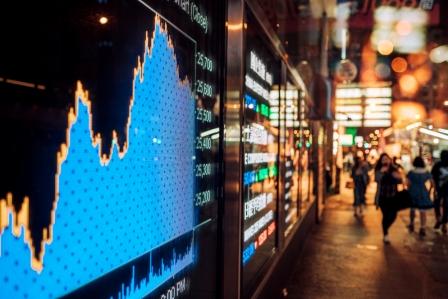From June onwards the third phase of peak margin and upfront margin collection system will come into play. There is a lingering fear that this imposition of margining system will suck out intraday liquidity, as traders would not be able to leverage their positions as much as they used to. Let us have a look at how real the threat is on the traders’ ecosystem.
Understanding margins
At the heart of the “margin” concept in capital market lies the settlement system which is on a T+2 basis in India. Why pay in full today for something that is to be delivered only 2 days later? Add to it, the chance of the executed order not getting delivered also, if the counterparty defaults, in which case, it undergoes a process of auction of shares, instead of settlement. The stock market allows the trader to pay up just the margin amount, which is a portion of the value of the order on the T day, with the expectation that the rest of the money would be topped up by T+2.
Now, in to this mix comes the responsibility of the exchange to manage counter party risk. In order to maintain confidence in the mind of the market participants, the stock exchange ensures that traders are compensated or insulated from defaults or non-performance of those on the other side of the transaction. This responsibility weighs heavily on the exchanges during the times of high volatility, when default or risk of loss could be high. The margining system employed by the exchange is a response to this, so that the counterparty risk management at exchange end is manageable, while also discouraging the traders from disproportionate risk exposure.
In the case of stocks, this margin is composed of two main items, the VaR and the ELM as popularly known. VaR, which is the abbreviation of Value at Risk, is calculated and notified by the exchange, several times a day, based on volatility. ELM is the abbreviation of Extreme Loss Margin, which is the fixed additional margin charged.
In the case of derivatives, the two main components of margin are span margin and exposure margin. While span margin is based on the risk and volatility of the underlying asset, exposure margin seeks to cover the MTM losses.
There are indeed other margins too which the trader has to top up, for which, they have time till T+2, but the stress here is on the aforementioned margins.
What changed, and what led to it.
Earlier, brokers had to report the status of the margin collected, by EOD to clearing corporations/exchanges only at the end of the day (EOD). This gave brokers a window to allow greater leverage during the day for positions which are meant to be closed by EOD, by which time, the margin required to be put up becomes lesser. Consequently, a large section of traders began eying stock markets with a view to make quick bucks with practically little or no cash at all. The brokers allowed it on good faith, based on their perception of client’s paying ability, or based on their holdings, in the event of markets turning adverse. In other words, markets appeared to be moving continuously on an intraday basis. While, this is not factually correct, it became obvious to the regulator that the checking for margin at EOD was an inefficient method from the regulator’s point of view, as exposures during the day was disproportionately high when compared to the EOD positions.
Hence, instead of EOD, clearing corporations have begun to check the same through the day, where in they take four snapshots of the positions on random basis and assign the margin calculated out of highest figure of those four, as the payable margin. Towards this end, brokers are required to collect ELM + VaR margin (a minimum of 20% of the trade value for stocks). In the case of futures (F &O, commodities and currencies), the requirement of SPAN + Exposure margin was already in place, so the change is felt more on the stock trader.
Non-compliance attracts penalty, but the implementation, which started from December 2020, is being rolled out in four stages. This meant that during the period from 1st December 2020 onwards traders had to put up at least 25% of the required margin, while this requirement became 50% from 1st March 2021 onwards. From 1st June 2021, traders will have to put up at least 75% of the required margin, and from September onwards any shortfall from the required margin would attract a penalty.
The impact.
- To be system ready: The first rush was on the side of brokers and intermediaries to be system ready to incorporate several changes in a short time span, further exacerbated by Covid induced restraints.
- Free flow interrupted: Since only 80% of proceedings from the sale of holdings will be made available for fresh positions, until T+2 of the sale of the holdings, the free flow of money from one trade to another gets interrupted on T. The remaining amount is allowed to be released on T+1, in the case of “early pay in” though. This was a reality check for most, especially the second tier brokers or jobbers, as these changes fell like an axe on the root of their business model. It is hoped that traders will get accustomed to higher margin progressively, and a new normal would be in place.
- Decline in trading volumes on the exchanges. But, this is yet to show in the cash market, partly due to a roaring bull market that has continued to find more and more legs. Both the FII inflows, as well as record rise in demat accounts are testimony to this. However, futures did take the brunt in both MCX as well as NSE. The Average Daily Turnover (ADT) of futures in NSE can be said to have shown degrowth, having risen just 2% during the period of November 2020 to April 2021, even as market capitalization rose. The ADT of commodity futures in MCX fell 23% during the same period, which can also be attributed to the commodity transaction tax (CTT), which is among the highest in the world.
- Options Swell, Risk re-appears: As a follow-through effect of higher margin, at least in part, traders look to have flocked to options, primarily on the buying side, as witnessed by the rise in premium turnover in NSE. This trend was not visible in MCX commodity futures, but the ADT of options in NSE rose 67% during the November-April period. It must be noted here that, premiums are required to be paid in full, and is unaffected by the new margin rules. Even though this premium, which is also the investment amount, is lesser than that required for buying similar quantity of stocks on most occasions, these instruments are extremely volatile and speculative. On the other hand, option sellers, who are a more measured and disciplined set of traders found themselves at a disadvantage though due to the rise in margins, which were already as high as that of futures. So, on the face of it, it appears that the risk that the regulator had tried to stub out, has reappeared elsewhere.
- Intraday vs Delivery: By September, the peak margin, in percentage terms, for intraday would be equal to the margin required for carrying forward the position. Would this prompt the trader to carry forward positions which he/she would have otherwise closed out, so as not to attract higher margins? There is potential for the same, but there is no evidence for now, if you look at the deliverable quantity in NSE. The main reason for this, for now, is that leverage is not the only reason why a trader decides to trade intra-day rather than take delivery. Firstly, the risk premium that the market fetches today would be different from that of tomorrow, and the trader usually prefers the risk of today over the uncertainty of tomorrow. Secondly, traders can also take intraday short positions in cash, which is not possible to be carried for the next day. In short, “intra-day” is likely to keep its charm, despite the leverage challenges.
- Leverage is not gone. Firstly, peak margin has not sucked out leverage altogether, but has brought in a system ensuring a 20% margin (by September). Secondly, the quest for leverage will continue to be a priority for traders and industry has already begun to meet this demand through margin trading products. Such products will also help put their stock holdings to use, while meeting the margin requirements. There has been a certain reluctance on the traders’ side to embrace the pledging required for this, and there has also been technical issues in the process with the depositories. However, with time, both these aspects will be forgotten, just as markets did, when it moved from physical format to demat, 25 years back in 1996.






